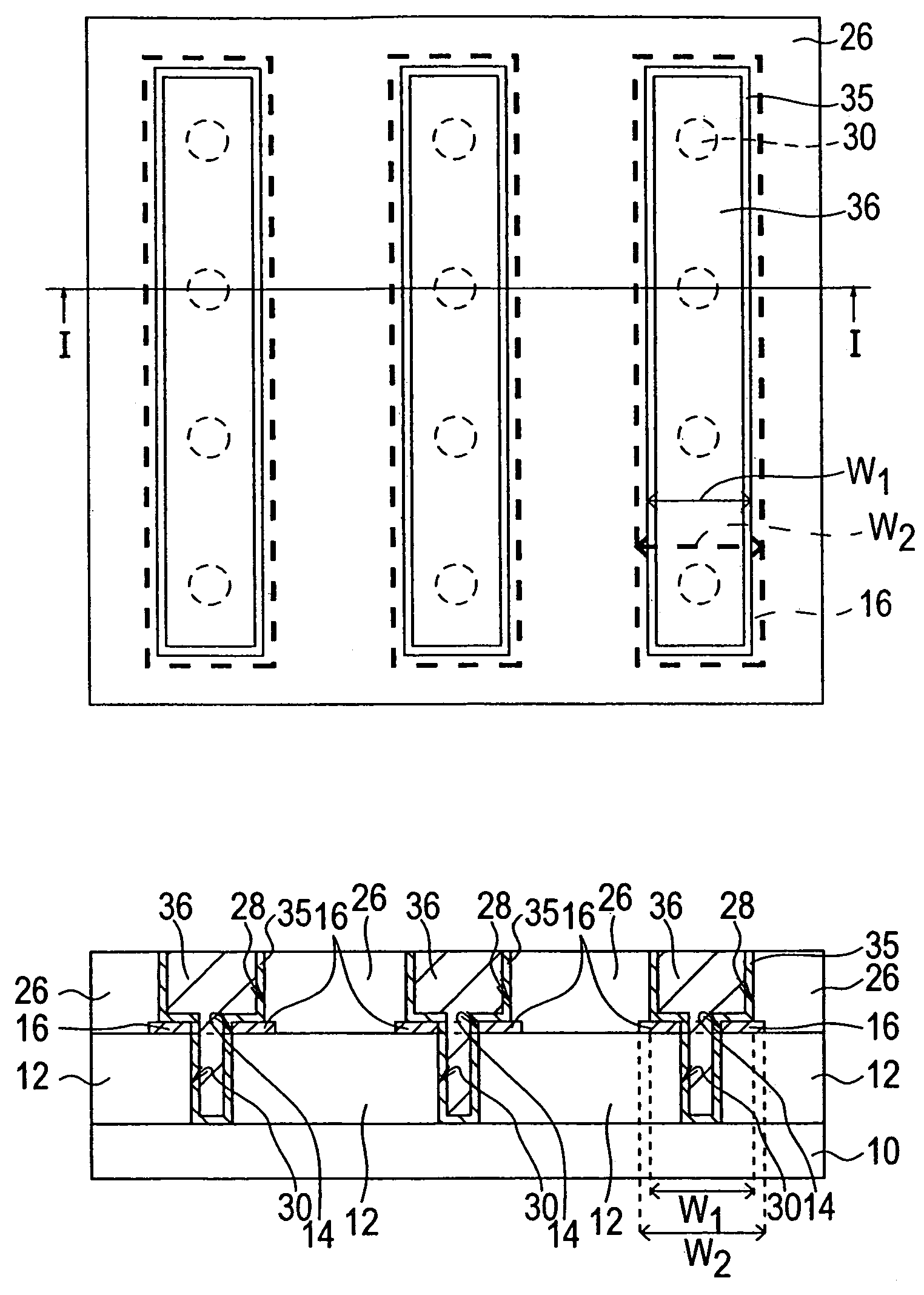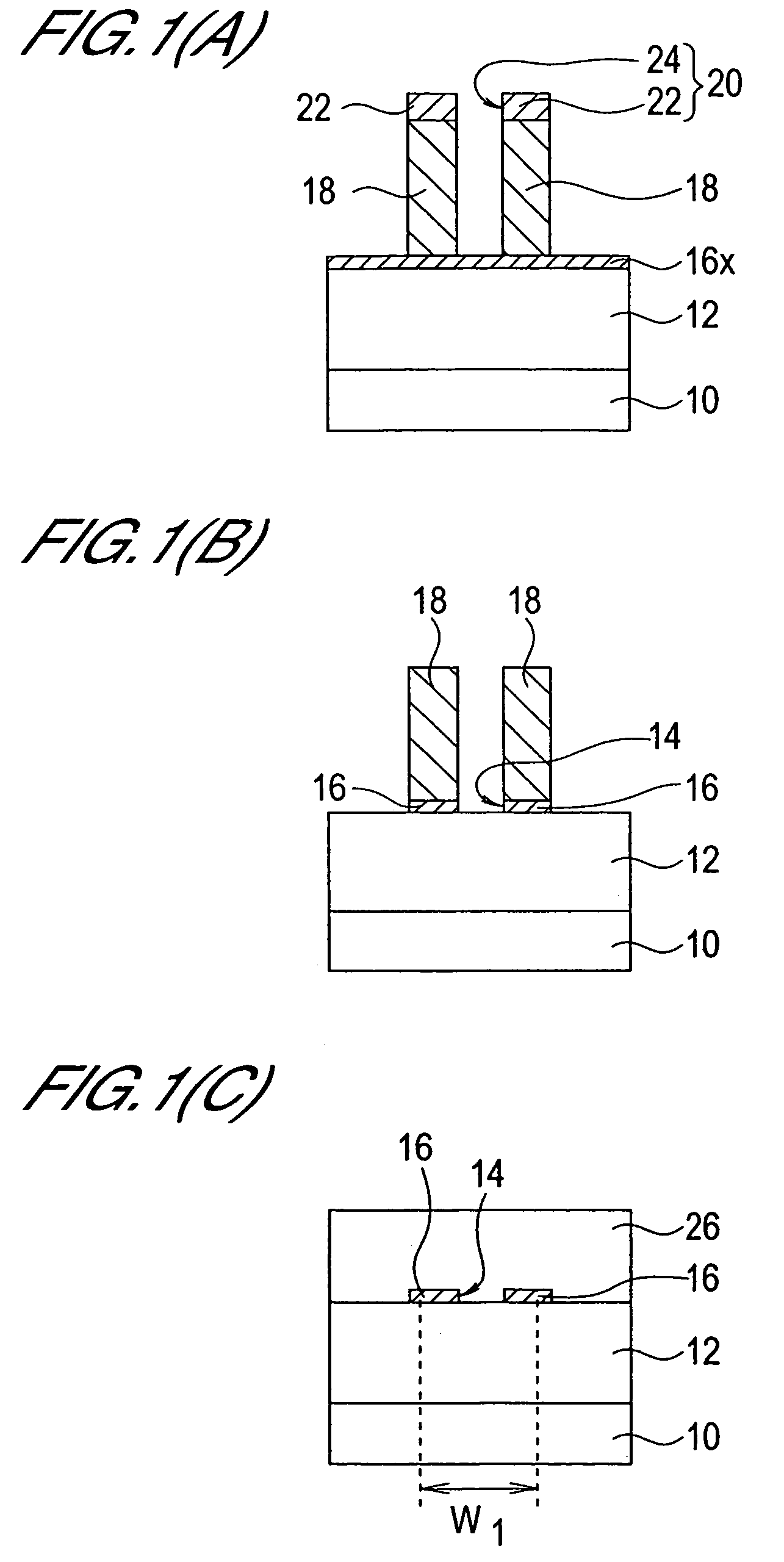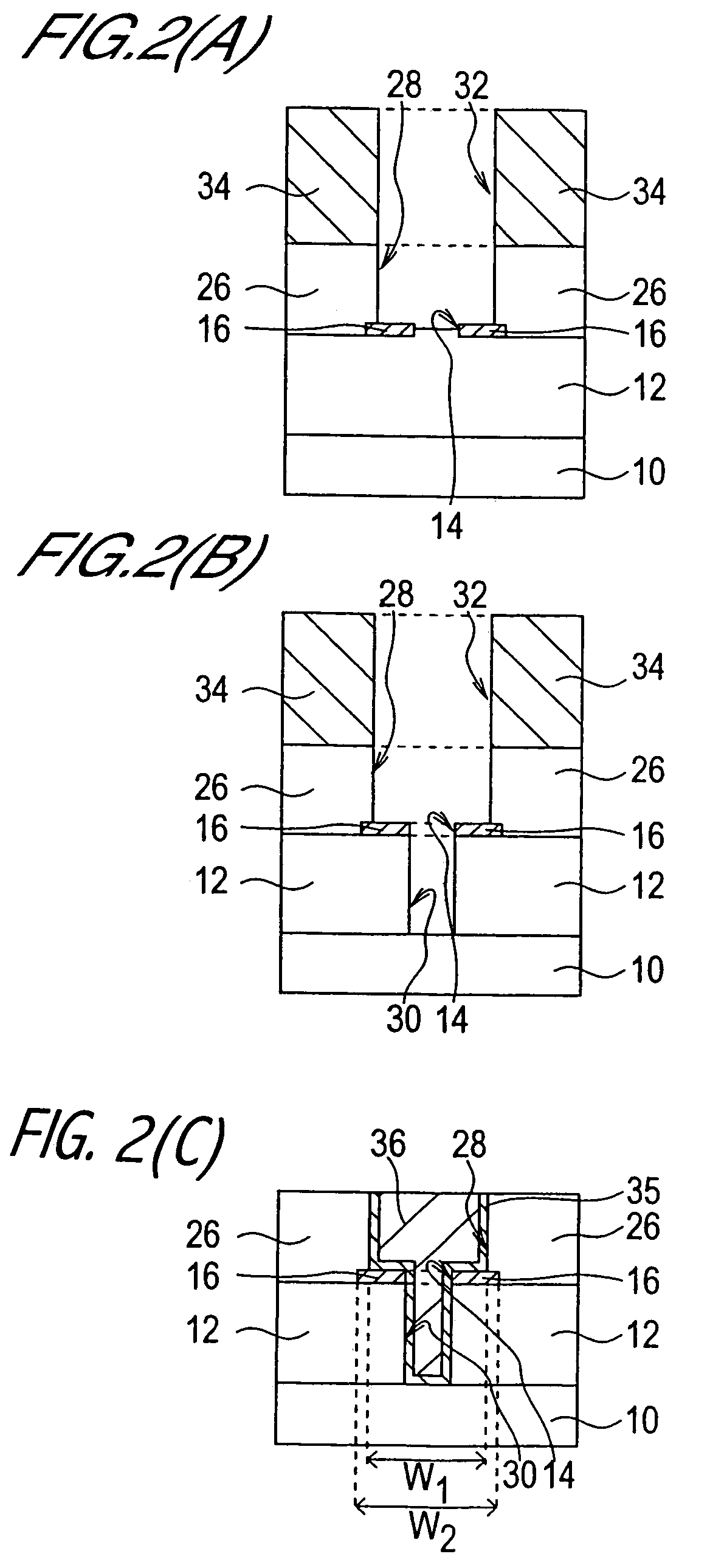Semiconductor device with reduced interconnection capacity
a technology of nitride film and interconnection capacity, which is applied in the direction of semiconductor devices, semiconductor/solid-state device details, electrical apparatus, etc., can solve the problems of high dielectric constant of /b>, high stress, and inability to speed up small devices, etc., to achieve low interconnection capacity and reduce stress placed on nitride film
- Summary
- Abstract
- Description
- Claims
- Application Information
AI Technical Summary
Benefits of technology
Problems solved by technology
Method used
Image
Examples
first embodiment
[0043]With reference to FIGS. 1 through 4, an example of the manufacture of a semiconductor using the dual damascene process will be explained as a first embodiment of the present invention.
[0044]FIGS. 1 to 3 give overviews of the processes involved in the manufacture of semiconductor devices in the embodiment of the present invention. They provide cross sections taken at positions on the structure during manufacture that have both a hole for a contact between lines and a groove for a line. FIG. 4 is a general schematic view of the mask used in photo lithography processing.
[0045]Firstly, a base oxide film 12 as a lower oxide film is formed on a underlayer 10 (process 1-1) (FIG. 1(A)).
[0046]In this example, the CVD method is used to form an SiO2 film, which is the base oxide film 12, of between 500 and 800 nm in depth on the Si substrate 10 used as the underlayer.
[0047]Next, a nitride film pattern 16 with a hole pattern 14 is formed on the base oxide film 12 (process 1-2) (FIGS. 1(A)...
second embodiment
[0062]With reference to FIGS. 5, 6 and 7, an example of the formation of a nitride film pattern using a method different to that used in the first embodiment will be explained as a second embodiment of the present invention.
[0063]FIGS. 5 and 6 provide overviews of the processes involved in the manufacture of the semiconductor devices of this embodiment of the present invention. They provide cross sections taken at positions on the structure during manufacture that have both a hole for the contact between lines and a groove for line.
[0064]FIGS. 7(A) and 7(B) show a partial plan view of a semiconductor device of the second embodiment of the present invention and a cross-sectional view taken along the line I—I of FIG. 7(A), respectively.
[0065]Below, those points that differ from the first embodiment will be explained and detailed explanation of those points that are the same, as the first embodiment will be omitted.
[0066]Firstly, the base oxide film 12 is formed on the substrate 10 (pr...
third embodiment
[0080]With reference to FIGS. 8, 9 and 10, an example of the formation of a nitride film pattern using a method different to that used in either the first or second embodiment will be explained as a third embodiment of the present invention.
[0081]FIGS. 8 and 9 provide overviews of the processes involved in the manufacture of the semiconductor devices of this embodiment of the present invention. They provide cross sections taken at positions on the structure during manufacture that have both a hole for the contact between lines and a groove for line.
[0082]FIGS. 10(A) and 10(B) show a partial plan view of a semiconductor device of the third embodiment of the present invention and a cross-sectional view taken along the line I—I of FIG. 10(A), respectively.
[0083]Below, those points that differ from the first and second embodiments will be explained and detailed explanation of those points that are the same as the first and second embodiments will be omitted.
[0084]Firstly, the base oxide...
PUM
 Login to View More
Login to View More Abstract
Description
Claims
Application Information
 Login to View More
Login to View More - R&D
- Intellectual Property
- Life Sciences
- Materials
- Tech Scout
- Unparalleled Data Quality
- Higher Quality Content
- 60% Fewer Hallucinations
Browse by: Latest US Patents, China's latest patents, Technical Efficacy Thesaurus, Application Domain, Technology Topic, Popular Technical Reports.
© 2025 PatSnap. All rights reserved.Legal|Privacy policy|Modern Slavery Act Transparency Statement|Sitemap|About US| Contact US: help@patsnap.com



